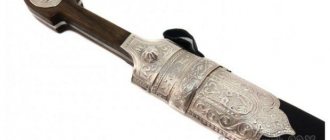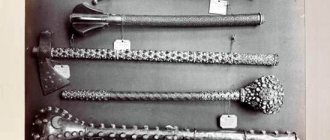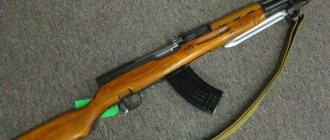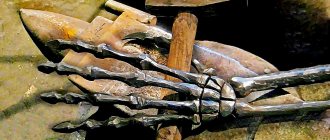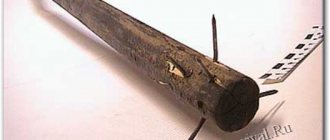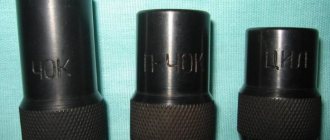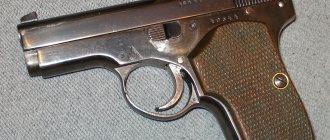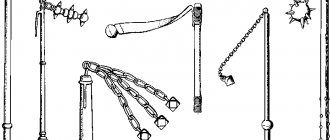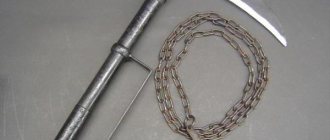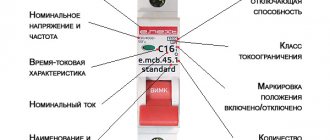Author Vyacheslav Shpakovsky
20.02.2017 17:21
Unknown » Past
From time immemorial to this day, there has been a legend in Nepal that says that a long time ago, a wonderful hawk with two heads and extraordinary wings appeared in the sky over a small country from time to time. The wings were in the shape of a sickle; towards the middle they became wider, and at the tip they narrowed. The legend said that whoever was lucky enough to see this unusual bird created a knife with a blade similar to the wing of a magic hawk.
62 shared
Railgun - the most peaceful miracle weapon
However, the knife is also interesting because it is perhaps the most ancient national type of bladed weapon. And today the inhabitants of the mountainous kingdom of Nepal use it in this capacity, and it is called kukri or khukri.
Kukri has not undergone any drastic changes for thousands of years. Its form was used on swords 2500 years ago, and this knife itself is still a mandatory part of the equipment of both ordinary soldiers and officers of the Nepalese Gurkha riflemen. They use it in close combat. In addition, the kukri is a truly universal item: it can be used both as a sapper shovel and as a hammer, and once in the impenetrable jungle, you can use a utility knife to chop like a machete. But you never know where kukri can come in handy.
A knife's journey around the world
Presumably, the kukri as a weapon was a development of the Greek sword kopis, which had a similar blade shape. It came to Nepal in the 4th century BC. e. thanks to the army of Alexander the Great. Kopis also had a one-sided sharpening along the inner edge of the blade curved inward, and was used for chopping blows, which is confirmed by the translation of its name from Greek - “to chop, to cut off.”
Weapons of this type were found at all times among a variety of peoples, the difference was only in the name. The earliest weapon of this series was the ancient khopesh, undoubtedly derived from the sickle. But the khopesh had a lot of sharpening options: external, internal and even double. In addition, the khopesh had a very long handle (half a meter or more), so it had some resemblance to a shortened halberd. The kopis was sharpened strictly on the inside, like a sickle, and its handle was similar to a saber (it is also mentioned by Euripides and Plutarch as a tool for cutting meat).
Scientists suggest that the kopis originated as a weapon in ancient Sumer, then came with the Medes to ancient Hellas. It gained significant distribution in Iberia.
The Romans liked its unusual shape. Later, the Iberian copis - falcata - was adopted by the Romans, and it became a favorite weapon in the Roman troops, especially in the cavalry.
Curtius, an ancient Roman author, narrating in his novel about the campaign of Alexander the Great, in particular, describing the battle with the Indians, mentions the kukri as a weapon of the Macedonians. The Indians fought them on elephants. And with what weapon can you defeat this powerful animal? Oddly enough, the kukri was such a weapon. The curved blade cut the trunks of elephants like dry reeds.
The second version was this: the curved shape of the blade came to ancient Greece from Africa back in the 6th century BC. e. Later, this type of knife reached the Balkans and further, to the Middle East, influencing the shape of the scimitar blade.
But regardless of the place of origin, the kukri to this day is considered almost the most ancient of all types of bladed weapons, which have come down to us practically unchanged.
The oldest kukri today, which is a museum exhibit, is located in the National Museum of Nepal and dates back to approximately the 14th-15th centuries. It is noteworthy that the museum exhibits do not differ significantly from modern ones. Samples from earlier times could not be preserved due to the poor quality of the metal used in the manufacture of kukri.
Kukri. Key Features
Nepal is a special country. A country of high mountains, a country of ancient customs and traditions.
A country of strong and confident warriors who still use the traditional Nepalese knife with a curved blade and a cutting edge on the concave side. To us, as representatives of another civilization, this shape of a knife seems strange. However, if you delve into the history of edged weapons, you will find in many cultures knives that are curved and sharpened on the concave side.
When choosing for yourself, you need to take into account that national Nepalese knives, first of all, are weapons that are used for defense and attack. This knife must be handled with appropriate care. The original Nepalese kukri knife has several points by which you can distinguish the original from souvenir products.
The blade of the knife has a straight spine, which ends with a sharply falling tip. Along the butt on each side of the kukri there are valleys. In the place where the heel of the blade is located in European knives, the kukri has a figured cut, which is called the “trident of Shiva.” This element suggests that the kukri is not only a working tool, but also an object of worship, endowed with sacred meaning. The handle of a kukri is usually oval in shape; a rim runs along the center of the handle, which is designed to confidently hold the knife.
Toward the back, the handle expands, forming a platform on the back similar to Scandinavian leukku knives.
This shape of the handle suggests that the main purpose of a knife of this type is cutting with the blade being pulled towards itself.
The sheath is made of thick genuine leather. The tip of the knife is decorated with a metal element. The sheath, as a rule, has compartments for two more items: a small working knife and a chair.
The shape of the knife resembles a small knife, however, it does not have a cutting edge, but is equipped with notches for cutting out sparks. There is a lot of debate about what a kukri actually is - a big knife or a small machete?
Judging by the structure of the blade and hilt (strong slashes and deep thrusts), it can be assumed that, most likely, the kukri is a small sword that was traditionally used in close combat.
Mysticism loaded
The kukri blade has a characteristic falcon wing profile and is sharpened on the inside. The center of gravity is moved from the handle to the end of the blade, which makes it possible to deliver powerful blows without much effort.
The blade had local hardening, and the forging technique, unchanged for centuries, which was passed on from generation to generation, helped to maintain its elasticity at a very high hardness.
Gunsmiths tried to decorate the blade and make it different from the rest. Most often, the blade was decorated with a crawling dragon, which was made by craftsmen through deep etching.
Each element of the kukri carried not only a practical meaning, but also a symbolic one. The rings on the handle allow you to firmly hold the kukri, and their number means cosmic levels. The characteristic “hollow” on the blade near the handle is called “cho”, however, the original purpose of the cho is unknown. Most likely, it is also a religious symbol. In addition to the symbolic, it also had a practical purpose: to protect the blade from cracks and chips at the handle. According to experts, such a cutout in the blade serves as a stress concentrator. As a result, this affects the strength of the blade, significantly increasing it. So, the kukris that they make in America have no cho, and cracks in the blade at the handle are the most common defect there. Practice shows that it is on this part of the blade that the greatest load falls when hitting a hard object.
The metal tip on the head of the handle was a symbol of the all-seeing eye of the god Shiva. Well, in practice, it was intended to protect the tip of the blade tang, which runs along the entire handle.
Steel arms. Kukri
According to legend, the wings of a magic hawk inspired the creation of the kukri. The Gurkhas believed that thanks to it the power of the god Shiva increases the destructive power of the weapon.
And researchers note that this element is necessary to increase the shock absorption and rigidity of the blade when struck with a butt or chopping. By the way, the handle itself, decorated with rings (a symbol of the universe), is made in such a way that the weapon can be confidently held even with a wet hand.
Cho - “Trident of Shiva” A small diamond shape on the top of the handle suggests the striking use of kukri: it symbolizes the eye of Shiva, which could accordingly be used to stun the enemy.
But the absence of a guard suggests that we are looking at more of a slashing weapon than a piercing weapon (the traditional kukri does not have the necessary stop for an injection). Thus, a decorative notch in the blade near the handle is necessary to maintain the strength of the blade during powerful chopping blows. With its help, the pressure is distributed throughout the blade, rather than concentrated at one point, which would lead to cracks and breakage.
It is believed that the ancestor of the kukri was the Greek sword kopis. However, it also has a special symbolism: this element is called “cho” and means the trident of Shiva, although someone notes that it can mean the hoof of a sacred cow. In any case, the “cho” is a clear example of how important every detail of a traditional kukri is (for example, in the American versions of this knife, the “cho” was missing, which led to the fragility of the weapon).
Kukri with chakmak and carda Moreover, in the manufacture of kukri they used and still use zone hardening.
Thus, the striking surface of the blade is strong, while the softer spine provides elasticity to the blade.
Whatever the size of the kukri (from the smallest - less than 20 cm, to the actual sword - more than 40 cm)
The blade that knows no loneliness
The kukri is worn on the belt in a spacious wooden sheath, which is covered with durable water buffalo skin and bound with metal for reliability. Expensive rosewood wood or, alternatively, the horns of the same water buffalo are invariably used for the handle.
In addition to the kukri, there are two more knives - carda and hakma, but of smaller sizes. The purpose of the card is exclusively for small jobs. Khakma was a piece of steel without a cutting edge, which was used as a flint.
Kukri can be roughly divided into four groups. Catrimoras is a decorated, festive knife. Bunspati and Sirupati (interestingly, the name "sirupati" comes from the siru tree, the leaf of which resembles this elegant blade). They were used exclusively as military weapons. They are not suitable as tools for housework. Their characteristic feature is a thin blade with a slight bend.
Angkhola and Bhojpuri had the exact opposite purpose of Bunspati and Sirupati. These knives were just needed for household needs. Their purpose is to be a working tool. They have a rather thick (almost a centimeter!) blade, shaped like a wide leaf. Moreover, the angkhola blade has wide fullers, similar to wavy indentations, numbering from three to five, increasing its strength. Janavar Katne is another type of kukri, with a blade length of 40 centimeters or more, but with less thickness.
Varieties[ | ]
- Catrimoras is a kind of award weapon. Most often the blade is richly decorated.
- Janavar katne - with a long and thin blade, more like a sword.
- Badhum is a fighting kukri with a fairly massive and thick (up to 0.8 cm) blade. A fairly wide blade with smooth lines.
- Bunspati is a military weapon with a narrow blade.
- Sirupati - A fighting knife popular in the southern regions of Nepal. It is considered the narrowest blade among others.
- Ang Khola is a utility knife with an average blade thickness of up to one centimeter.
- Bhojpuri is an analogue of ang khola kukri and also has household purposes.
- Hanshi - complements the rows of utility knives. Most often it is used as a sickle.
In films and on chevrons
Knives like kukri were lucky enough to “shine” on the silver screen. For the first time, the viewer saw techniques for wielding such military weapons in the film “Captain of the Khyber Rifles,” reflecting the course of the Indian uprising in 1857
Techniques for owning a kukri can be seen in the final scene of the American-British film “The Man Who Would Be King,” based on Kipling’s story of the same name. The role of Sepoy Billy Fish was played by an English actor of Indian origin, Saeed Jaffrey. The Russian TV series “Flint” and “Flint-2: Liberation” also used kukri in the fight scenes, and the art of possession was presented by actor Vladimir Epifantsev, who played the role of GRU Major Andrei Shamanov.
Well, at present, kukris, however, as before, are used as bladed weapons by the army and police of Nepal, as well as by mercenary brigades of Gurkhas serving in the British army. The image of a kukri is present on the national emblem of Nepal, as well as on the chevrons of Nepalese military personnel.
Discuss
Economic use
Many tourists are interested in what a kukri knife is for.
Residents of Nepal use it not only in battle. For peasants, this knife often replaces an ax or machete. They use it to cut sugar cane, vines and bamboo stalks to build huts. Hunters clear paths in the jungle for them. But for economic purposes, only simple models that have no sacred meaning are used. A real combat knife is never used for this. Souvenir kukri, which are sold to tourists in shops in Nepal, are low-quality products intended to be hung on the wall.
They should not be used for work, as the material they are made of is too soft, and the handles quickly fall off. The knives used in the army and police are made of much higher quality.
Modern manufacturers produce all-metal knives. Their handles are equipped with overlays made of wood or horn. Although these products are not traditional, they are more reliable and can be used for household purposes. Folding kukri models are also very convenient.
According to GOST, used in the Russian Federation, a kukri knife cannot be considered a bladed weapon. This is explained by the fact that the deflection of its butt is more than 15 mm, and the angle of the blade tip is more than 70 degrees. Legislation classifies such knives as household knives, since they are not suitable for stabbing.
The kukri knife is a weapon of ancient history, the configuration of which has been tested for centuries. It is designed to deliver powerful chopping blows, which is facilitated by the special shape of the cutting edge of the blade.
The Nepalese army is armed with kukri combat knives, and their economic varieties are widely used by local residents for domestic purposes.
Genuine or impostor?
Kukri existing in the modern world can be divided into:
- For practical use, so to speak working
- Souvenir
- Counterfeit antiques or working kukris
For practical use, products produced directly in Nepal by village blacksmiths for use on peasant farms are suitable.
Or purchased from companies that produce quality kukri. These are, for example, products from the Nepalese company Himalayan Imports, Gurkha House or the American company Cold Steel. Buying them is very expensive. But it is dangerous to buy such items in the markets: it will most likely be a fake, even if they bear the manufacturer’s marks.
Souvenir kukri are much cheaper; they are now made en masse in India, Pakistan, Indonesia, China and other countries besides Nepal. Therefore, buying it in Nepal itself at least to some extent guarantees its nationality. Although this may not matter, because its main task is to decorate the interior, pleasing the owner’s eye and causing fear or admiration of the guests.
Nepal, Gurkhas and their kukris are inseparable and incomplete without each other. Together they earned their fame, which will never be forgotten.
